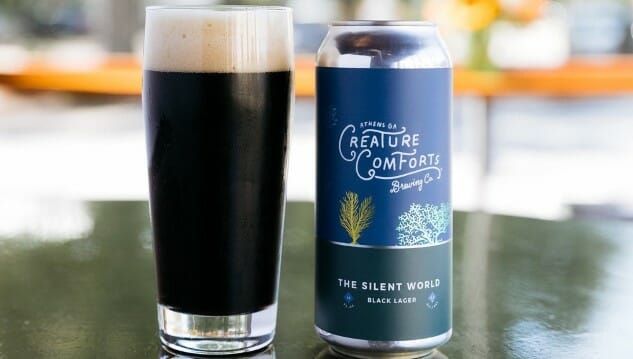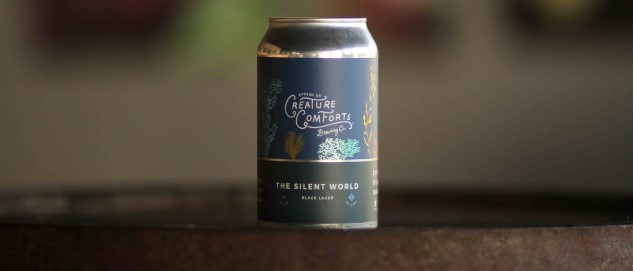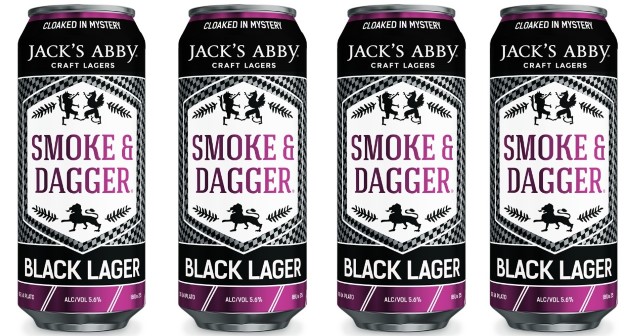
At the crux of darkness and drinkability you’ll find them: Dark lagers.
They may be described as “schwarzbier,” or “dunkel,” or “baltic porter” or “rauchbier,” but they share a certain rarity and niche appeal. All dark lager styles tend to exist at the fringes of American craft beer perception. As lagers, they’re overshadowed by lighter styles such as pilsner of helles, or amber styles such as Vienna or Märzen. As “dark beers,” they’re similarly in the shadow of porter, stout and even brown ale. They’re too dark to be lagers; too light to be “dark beers.”
And yet, I’ve always loved these styles. These humble dark lagers represent a very satisfying and equally under-served niche that is all too often being ignored in the American beer scene, which is more concerned with discovering the next emergent IPA subgenre, or inserting five competing dessert flavors into a pastry stout. As the number of breweries in the U.S.A. approaches 7,000, and competition between those breweries turns more cutthroat than ever, the temptation toward Instagram-friendly gimmickry seems to be strengthening. Everyone is trying to exploit the latest trends as quickly (and loudly) as possible.
Might I suggest that it might be more effective to embrace the opposite? Far fewer breweries out there are making great dark lagers, something that has always been true of lager styles in general. Yes, there are pitfalls in terms of the tank time and additional refrigeration that lager brewing demands, but there are small breweries out there making it work, carving themselves out reputations and successful businesses. Look at Metropolitan Brewing in Chicago, which has grown into one of the city’s most consistently high-quality establishments. Or look at a younger brewery like Arches Brewing in Atlanta, which has managed to make a variety of craft lagers into the centerpiece of their business; something we discussed with them a length this spring. From purely a variety perspective, I would love if these breweries proved to be the vanguard of a new dark lager movement—and FYI, Arches makes a pretty wonderful dunkel.
These are thoughts I found myself ruminating on recently, when I realized that I had two different beers in my fridge both labeled simply as “black lager.” One is from Athens, Georgia’s Creature Comforts, while the other is from lager specialists Jack’s Abby, of Framingham, MA. And although both beers bear the words “black lager” by way of describing their style, they’re actually quite different.
Let’s take a deeper look at both.
Creature Comforts Brewing Co. The Silent World

As stated above, The Silent World is simply described on its label and marketing materials as “black lager,” but this beer is pretty clearly a German schwarzbier, and an excellent one at that. It may be that “black lager” is a bit easier to expect the beer layman to grasp, than a fairly rare, German-sounding lager style, but The Silent World ably sums up so many of the things I like about schwarzbiers in general.
On the nose, The Silent World is nutty and expressive, with light roasted coffee notes and a thread of dark chocolate. On the palate, it’s the crispness that sets it apart—these beers differ from your typical porter or stout in being lighter on the palate, and not seeking that unctuous or silky/creamy mouthfeel. I’ve occasionally heard people say, or read in beer books, that you don’t get much “roast” in a classic schwarzbier, but I disagree—if anything what defines these beers to me is how clean, singular and uncluttered that roast character is. Beers like The Silent World are for the dark beer fans who actually appreciate roastiness, rather than just tolerating it alongside the greater degrees of residual sugar found in many porters and stouts (especially modern adjunct stouts). This beer, and other great schwarzbiers like it (Creature cites Moonlight Brewing Co.’s well-liked Death & Taxes Schwarzbier as an insiration) bring a wonderful blend of nuttiness (roasted chestnuts), cocoa and slight hoppiness (piney/herbal/earthy) into play, while balancing it with a dry finish.
In short: It’s a super drinkable dark beer with plenty of roasty backbone, and it would be a spectacular food beer thanks to how dry it finishes. Give me this and a burger, or pretzels, or chicken wings. Now I’m making myself hungry.
Jack’s Abby Smoke & Dagger

Jack’s Abby also describes this beer as simply “black lager” on its can and its website, but once again, that fails to properly convey exactly what it is we’re talking about: This beer is a rauchbier, and pretty approachable one for the style.
But first, I kind of have to nitpick for a moment: If you’ve got descriptive text on a beer like this, I think you have to mention that it’s a smoked beer. Yes, “smoke” is obviously in the beer name, but when it says “black lager” as a style, I’m going to be willing to assume that it’s just an evocative name, rather than an overt promise of smoked malt. Likewise, the description says “This black lager is brewed with traditional old world ingredients and cutting edge lagering techniques”—that’s the whole thing. You don’t specifically have to say “rauch,” but I think it’s a good idea to imply “this is smoky” a bit more strongly than this. Who’s with me?
Edit: As it turns out, the brewery doesn’t consider Smoke & Dagger to be a rauchbier, but instead a cross between schwarzbier and smoked porter. They also say the following: “The use of a small percentage of traditional Beechwood smoked malt adds complexity and balances the liberal use of chocolate malt. Notes of roasted grains, beechwood smoke and coffee accompany a full bodied and sweet chocolatey malt character.”
ANYWAY. It does do well in proving my point, though, that one “black lager” is not necessarily anything like another. Because this rauchbier (another traditional German style) incorporates smoked malt, it announces its presence immediately on the nose with meaty notes of sweet smoke and yes … bacon bits. On the palate you get some nice, nutty malt to balance out the smoke, which all in all isn’t overly assertive, which I appreciate. There’s a bit less roast here than in The Silent World, or perhaps it’s just more difficult to perceive it. Instead, this beer strikes me as more generally “malty” and substantial, with a fuller texture that is rounder and smoother, and a savory note that you only tend to get via meaty smoked beers. Still, despite that, it finishes nicely dry, and the lingering smoke note dissipates quickly enough that you could plow through a pint in short order.
These two beers only scratch the surface of the different ways you can present dark lagers, and the niche they’re able to fill in an American craft beer market that is currently more interested in hops, sweets and sours. If you’re a homebrewer, considering giving some of these styles a try. If you’re a professional brewer, consider making some for your taproom.
And if you’ve already got one, consider mailing it to me.
Jim Vorel is a Paste staff writer and dark beer lover. You can follow him on Twitter for more drink writing.